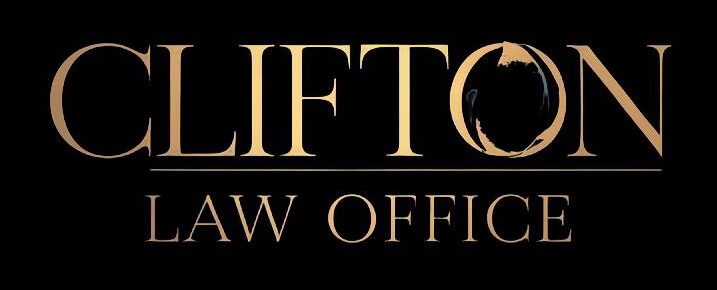Introduction
As we move deeper into 2025, the American legal landscape continues to evolve rapidly. From regulatory overhauls and AI governance to shifting labor laws and cybersecurity mandates, businesses—regardless of size or industry—face increasing complexity and potential legal exposure.
At [Law Firm Name], we’re committed to helping clients not only react to legal challenges but anticipate and prepare for them. In this insights post, we explore the most pressing legal risks facing U.S. businesses today, and provide practical guidance for leaders who want to build compliance and resilience into their operations.
1. AI and Data Regulation: The Dawn of Accountability
The Risk:
The accelerated adoption of AI technologies in business—from HR software to predictive analytics—has prompted heightened scrutiny by federal and state lawmakers. In 2024, several states passed AI-specific legislation, and 2025 is shaping up to be the year the federal government follows suit.
What You Need to Know:
- The Federal Trade Commission (FTC) has issued updated guidance on “algorithmic fairness,” mandating transparency in automated decision-making.
- The proposed American Artificial Intelligence Accountability Act is expected to impose disclosure, auditing, and bias mitigation requirements on AI systems used in employment, finance, healthcare, and more.
- Several states (California, Illinois, New York) are enforcing biometric data protection laws, with AI-enabled facial recognition drawing particular concern.
Action Steps:
- Conduct an AI audit of your organization. Identify tools used and ensure they’re compliant with data protection standards.
- Update your privacy policy to disclose AI use, especially in hiring or customer-facing applications.
- Consult legal counsel before implementing AI-driven decisions that could impact individual rights.
2. Employment Law Shifts: From Remote Work to Pay Transparency
The Risk:
Labor law in the U.S. continues to respond to changing workplace norms. Issues like pay transparency, employee classification, and remote work rights are dominating legislative agendas.
What You Need to Know:
- Pay transparency laws are now active in more than 10 states, requiring employers to disclose salary ranges in job postings.
- The U.S. Department of Labor has narrowed the definition of “independent contractor,” increasing misclassification risks.
- Several cities and states now mandate reimbursements for remote work expenses.
Action Steps:
- Review and revise job descriptions and postings to comply with pay disclosure requirements.
- Conduct a classification review for contractors and freelancers.
- Update remote work policies to reflect local jurisdictional mandates.
3. Cybersecurity & Data Breach Litigation: The Compliance Crunch
The Risk:
Data breaches are becoming more frequent—and more costly. Beyond reputational damage, companies face escalating legal exposure under both federal and state laws, as well as increasing consumer litigation.
What You Need to Know:
- The Cybersecurity and Infrastructure Security Agency (CISA) is pushing for mandatory breach disclosures within 72 hours.
- California’s Consumer Privacy Rights Act (CPRA) enforcement is in full swing, and several other states are following suit.
- Businesses that fail to follow “reasonable security practices” are being held liable even in cases involving sophisticated cyberattacks.
Action Steps:
- Ensure you have an incident response plan that complies with CISA’s guidelines.
- Conduct penetration testing and document all cybersecurity practices.
- Establish internal procedures for rapid breach assessment and legal notification.
4. ESG Litigation: When Social Responsibility Becomes a Legal Risk
The Risk:
Environmental, Social, and Governance (ESG) policies have become a standard in corporate governance. However, failing to live up to these commitments—or misstating them—can now trigger legal claims and regulatory investigations.
What You Need to Know:
- The SEC is finalizing climate disclosure rules that will require detailed emissions data and risk reporting.
- Shareholder derivative suits related to ESG misrepresentations are on the rise.
- Greenwashing—exaggerating a company’s environmental responsibility—can result in both consumer fraud claims and regulatory penalties.
Action Steps:
- Review ESG reports and sustainability statements for accuracy and legal risk.
- Train your marketing team on compliant ESG language.
- Develop a process for verifying ESG metrics before public disclosure.
5. Contract Risk & Supply Chain Disputes
The Risk:
From geopolitical tension to raw material shortages, supply chains are still vulnerable in 2025. Poorly drafted or outdated contracts can expose businesses to significant risk when disruptions occur.
What You Need to Know:
- “Force majeure” clauses are being reexamined in light of global uncertainty.
- Courts are taking a stricter view on ambiguity in vendor and service level agreements.
- ESG obligations are increasingly being built into supplier contracts—and enforcement is tightening.
Action Steps:
- Audit your key contracts for outdated clauses and unclear terms.
- Consider adding “climate force majeure” and ESG compliance provisions.
- Implement a contract management system to monitor renewals and compliance.
6. M&A and Antitrust Scrutiny: Deal-Making in a Tighter Regulatory Environment
The Risk:
The Federal Trade Commission and the Department of Justice have taken a more aggressive stance on mergers, especially in tech, healthcare, and logistics sectors.
What You Need to Know:
- The 2023 Merger Guidelines now emphasize potential harms to workers and innovation, not just consumer pricing.
- Even smaller transactions can trigger review if they involve sensitive data or vertical integration.
- “Gun-jumping”—coordinating business operations before deal closure—is a growing enforcement area.
Action Steps:
- Engage antitrust counsel early in the deal process.
- Be cautious with data sharing during due diligence.
- Train your team on pre-merger conduct restrictions.
7. Intellectual Property & Emerging Tech: The Patent Landscape Evolves
The Risk:
New technologies—including generative AI, quantum computing, and biotech innovations—are challenging traditional intellectual property frameworks.
What You Need to Know:
- Courts are still grappling with whether AI-generated content can be patented or copyrighted.
- There’s a rise in patent litigation from non-practicing entities (NPEs), especially targeting startups and software firms.
- Trademark enforcement is becoming more complex due to global e-commerce and counterfeit challenges.
Action Steps:
- Revisit your IP strategy if you are developing or using generative AI tools.
- Consider defensive publication or provisional patents to protect innovations.
- Monitor online marketplaces for trademark infringement and counterfeit activity.
8. Litigation Trends: Class Actions and Consumer Protection Suits
The Risk:
Class action lawsuits continue to grow across industries—from mislabeled products to subscription billing practices.
What You Need to Know:
- Automatic renewal laws (ARLs) require clearer disclosures and consent mechanisms.
- Consumer finance practices are under renewed scrutiny, especially BNPL (buy now, pay later) services.
- Courts are showing less tolerance for procedural missteps like inadequate arbitration clauses.
Action Steps:
- Review website terms and conditions for clear, enforceable arbitration and waiver clauses.
- Train customer service teams on complaint documentation—it can be vital in court.
- Monitor competitor litigation to stay aware of evolving consumer legal strategies.
9. Corporate Governance & Fiduciary Risk
The Risk:
Board members and executives are facing increased legal scrutiny related to oversight, compliance, and whistleblower retaliation.
What You Need to Know:
- The SEC has increased whistleblower awards, encouraging more reporting of internal failings.
- Directors are being held liable for failing to oversee cybersecurity and ESG-related risk.
- The DOJ is pursuing more individual accountability in corporate investigations.
Action Steps:
- Ensure board members receive updated compliance training.
- Establish a confidential and independently managed whistleblower hotline.
- Review D&O insurance policies for emerging litigation coverage gaps.
Final Thoughts: Prepare, Don’t Panic
Legal risk is an inevitable part of doing business—but surprise shouldn’t be. By taking proactive steps and building strong legal frameworks, your company can turn risk into resilience. Whether you’re scaling a startup or managing a Fortune 500 enterprise, 2025 is the year to assess, adapt, and act.
At [Law Firm Name], our team specializes in helping businesses navigate legal complexity with confidence. Whether you need a compliance audit, contract review, or litigation strategy, we’re here to help.


